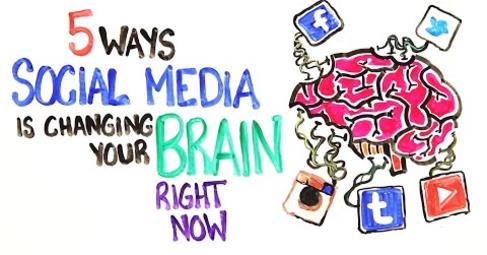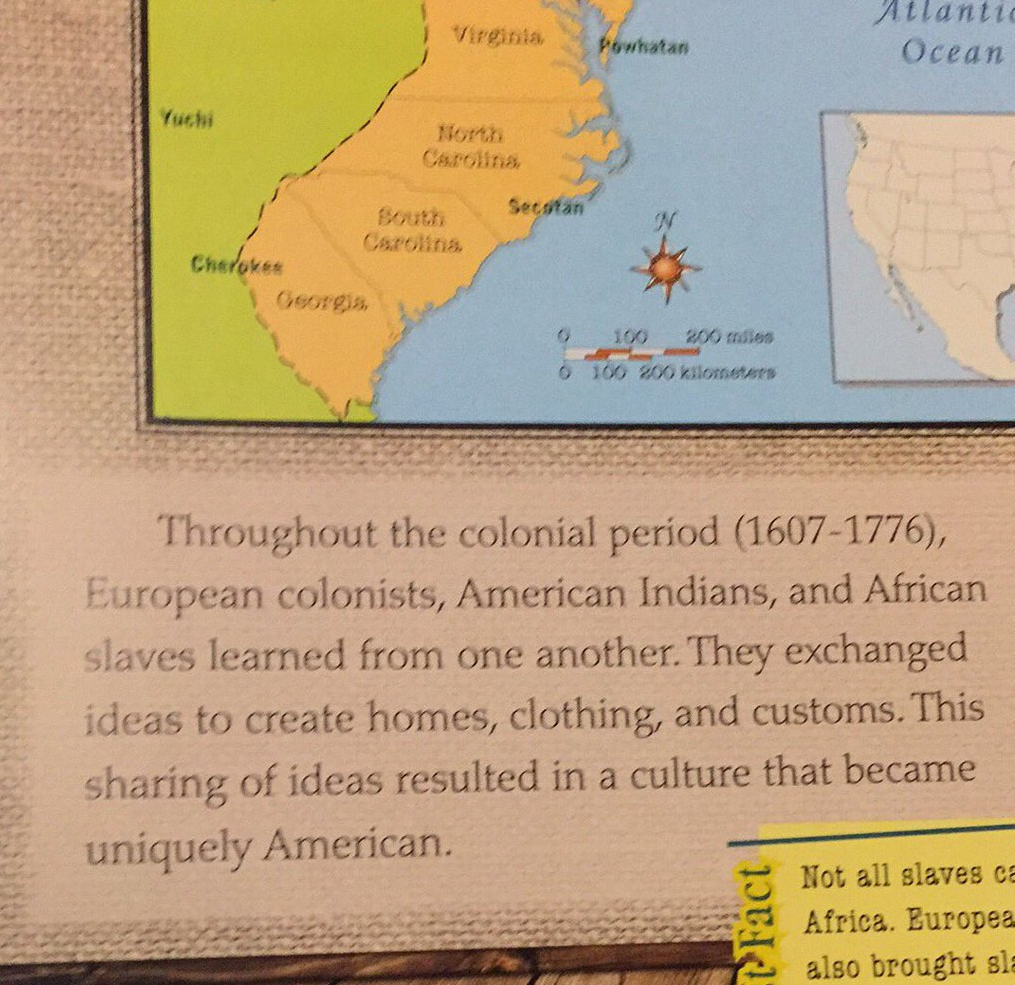Everybody Panic! 5 Ways Social Media is Changing Our Brains.

The TED Ed video below looks at five areas our brain is changing then asks students a series of questions requiring correct answers that in short explain how the use of the internet in general, and social media in particular can ruin them. Go ahead and take 3.5 minutes to watch the video here. Then hop below the picture and read as I debunk each of the five myths.

Myth #1 I check my social media accounts throughout the day so I must be an addict.
Before social media we checked answering machines. We waited by phones for calls. We checked the mailbox each day looking for certain communication. We also checked email and voicemail. We looked out for magazine and newspaper subscriptions. Humans are addicted to communication and information. We used to get it one way. Now we get it in another, more efficient way. We've always wanted to communicate and get information. Social media didn't cause this and there’s nothing wrong with our desire to read, write, get information and connect.
Myth #2a: In face-to-face conversations most of what we discuss is information about one another. In social media most of what we post is about ourselves. This means social media is making us more self-obsessed and self absorbed.
Why on earth are we comparing social media only to face-to-face conversations? A large part of what we use social media for today is what the previous generation used the diary for. Did diaries make us self-absorbed? No they didn't. The only difference today is that the diary is interactive and that increases literacy. Win / win.
Myth #2b: But there's a level of self absorption with teens when it comes to their usage of social media.
Adults have been saying teens were self-absorbed with or without social media. It is a natural part of adolescence and self-discovery. The finding that every generation is the "Me" generation fits with developmental psychologist David Elkind's adolescent egocentrism theory. According to Elkind,teenagers believe that they are the center of their universe. They feel that they have an imaginary audience that follows them everywhere, watching and being impressed by their behaviors. Roberts and colleagues pointed out that this self-focus diminishes as teens develop close interpersonal relationships in the early twenties and begin their own families, causing their focus to shift away from themselves and toward their loved ones. People should, then, get less narcissistic as they get older through these normative developmental changes.
Tools and ideas to transform education. Sign up below.
Myth #3: The research shows that heavy users of social media are bad multi-taskers so shouldn't I be careful not to multi-task?
This video refers to studies that indicate you can not be as effective and competent if you multitask, but once you scratch beneath the headlines of those studies, you find the studies are flawed. They measure multitasking by creating an artificial environment where the tasking is done “to” rather than “by” the subjects in the study. Educator, Ira David Socol elaborates on their fatal research mistakes among other things pointing out the absurdity of measuring nonsense tasks here.
Don Tapscott author of the book Growing Up Digital and its sequel Grown Up Digital, puts it this way: “Rather than creating dysfunctional brains that can't focus, the evidence is just as strong that experience being "bathed in bits" is pushing the human brain beyond conventional capacity limitations. So-called multitasking may in fact result from better switching abilities and better active working memory. Young people are likely developing brains that are more appropriate for our fast paced, complex world.” You can read from Don directly here.
Myth #4: 5 - 10% of internet users can't control how much time they spend online. Since we don’t know who will fall into that statistic, we should keep students away from this resource.
Would we be as concerned if children couldn't control their desire to read, write, build, calculate, critically think? No we wouldn't. Yet these are all the types of things students are doing online. We need to look more deeply than the tool they are using and start exploring what they are using it for.
Are they looking at porn? Maybe, but that’s nothing new. Prior to the internet it wasn’t unusual to find a teen had a stash of Penthouse magazines or got their hands on some XXX videos. So, deal with that issue, if it’s an issue for your teen. However, it is also quite possible they are using online resources for beneficial reasons. Whatever young people are doing we always want to support them in being reflective about how well they are spending time and also understand that it's also okay to socialize and play games at times too.
Myth #5: One researcher found people have phantom vibration syndrome where they imagine their phone is vibrating when it’s really not. We’re doomed.
This is referring to a study from 2012 (ancient in tech years) when young people still used to keep their phones on vibrate getting a signal every time they got a text, call, notification, etc. Because their phones were always a-buzzing once every couple weeks, they might mistake their phone buzzing when it really wasn’t. These days teens have developed sophisticated ways to manage social media. They might mute or turn notifications off and they certainly don’t have their phones buzz every time there is an activity. Teens today are constantly coming up with smart ways to manage their devices. These days when we hear a phone ring or buzz, that’s usually the adult room.
This TED Ed video hits on an important lesson we need to ensure our students know. Wherever students get their information, whether it be a textbook or a TED Talk they should never just accept and spew back what is presented. We must help them to always question, think and dig more deeply into what is being presented. Asking our kids to regurgitate sensational facts from this TED video or the textbook passage captured below, will not help prepare our children for success. Helping them think critically, find information, have discussions with a diverse audience is certainly more effective and guess what? The internet in general, and social media in particular provides a great platform to do just that.

Lisa Nielsen writes for and speaks to audiences across the globe about learning innovatively and is frequently covered by local and national media for her views on “Passion (not data) Driven Learning,” "Thinking Outside the Ban" to harness the power of technology for learning, and using the power of social media to provide a voice to educators and students. Ms. Nielsen has worked for more than a decade in various capacities to support learning in real and innovative ways that will prepare students for success. In addition to her award-winning blog, The Innovative Educator, Ms. Nielsen’s writing is featured in places such as Huffington Post, Tech & Learning, ISTE Connects, ASCD Wholechild, MindShift, Leading & Learning, The Unplugged Mom, and is the author the book Teaching Generation Text.
Disclaimer: The information shared here is strictly that of the author and does not reflect the opinions or endorsement of her employer.
Lisa Nielsen (@InnovativeEdu) has worked as a public-school educator and administrator since 1997. She is a prolific writer best known for her award-winning blog, The Innovative Educator. Nielsen is the author of several books and her writing has been featured in media outlets such as The New York Times, The Wall Street Journal, and Tech & Learning.
Disclaimer: The information shared here is strictly that of the author and does not reflect the opinions or endorsement of her employer.
